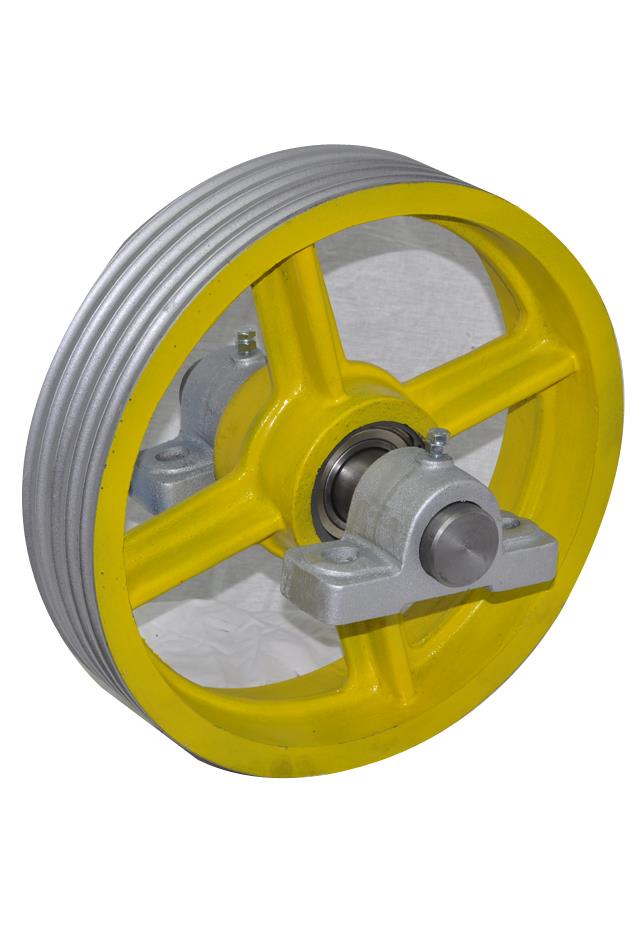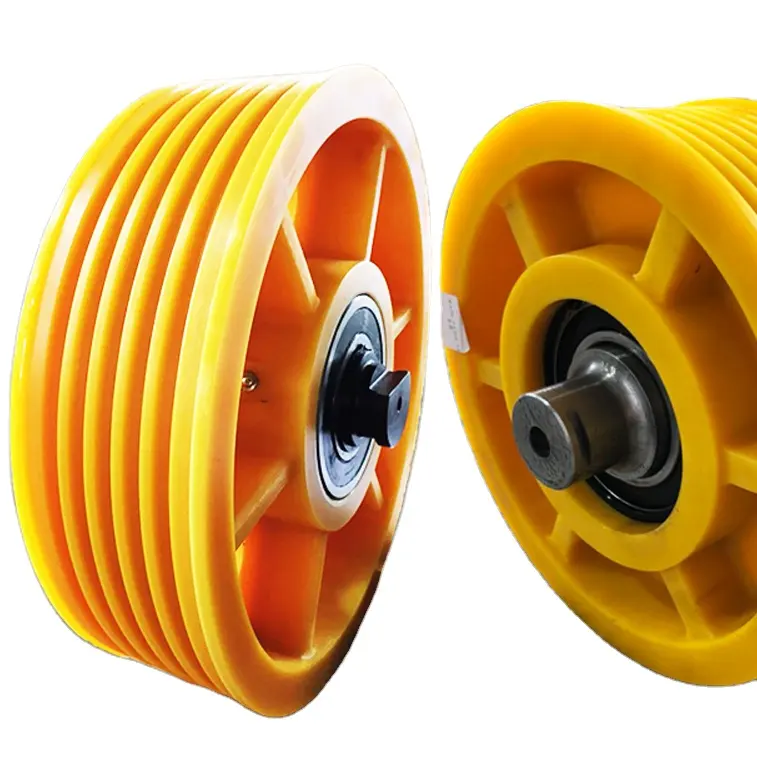Product Description
Stainless Steel SS304 Hardware Rigging wire rope rolling bearing block pulley
| Item | Wire Rope Pulley |
| Model | Single Pulley, Double Pulley |
| Size | M15-M100 |
| Material | Stainless Steel 304/316, Carbon Steel |
| Standard | DIN, ASME, BS, JIS, AS, EN, GB for option |
| Grade | A2-70, A4-80, 4.8/8.8 |
| Finish | Plain, Passivation, Polishing, Galvanized, Zinc Plated, Hot-dip Galvanized |
| Delivery Time | 3-15 days |
| OEM | Available |
Q: What’s your product range?
A: Our product cover Bolts, Screws, Nuts, Washers, Spring ,Rivet, Anchor, Pulley, Rigging and so on.
Q: How long is your delivery time?
A: 3 days for stock items,7-15 days for production.
Q: How do you control your quality.
A: QC on-line inspection and final inspection before delivery. 6S management. MTC and Quality Report can be provide.
Q: Could you provide free samples?
A: Yes, we could offer free samples for the items in stock, just need to pay shipping cost, it can be refunded to your orders.
Q: Do you accept small order?
A: Sure, we can accept small orders if we have stock of the specification which you need..
Q: What is your packing ?
A: 20-25kg for 1 carton,36 or 48 cartons for 1 pallet. One pallets is about 900-960kg. Customized carton and Customer’s logo is available.
Q: What is your payment term?
A: We can accept T/T, L/C for bulk order. Paypal and Western Union for small order or sample order.
Made-in-China Online payment is available.
Q: Do you accept customized order?
A: Yes, we can produce according to sample or drawing.
/* March 10, 2571 17:59:20 */!function(){function s(e,r){var a,o={};try{e&&e.split(“,”).forEach(function(e,t){e&&(a=e.match(/(.*?):(.*)$/))&&1
| Warranty: | 1 Year |
|---|---|
| Type: | Wire Rope Pulley |
| Material: | Stainless Steel/Carbon Steel |
| Number of sheaves: | Single Pulley, Double Pulley |
| Control: | Manual |
| Color: | Silver |
| Samples: |
US$ 0/Piece
1 Piece(Min.Order) | |
|---|
| Customization: |
Available
| Customized Request |
|---|
Can lifting pulleys be upgraded or retrofitted into existing lifting systems?
Yes, lifting pulleys can be upgraded or retrofitted into existing lifting systems to improve their performance, efficiency, and safety. Upgrading or retrofitting lifting pulleys offers several benefits and allows for the integration of new technology and advancements. Here’s a closer look at the process and advantages:
1. Assessment of Existing System: Before considering an upgrade or retrofit, it is important to assess the existing lifting system. Evaluate the condition of the pulleys, cables, ropes, and other components. Determine if any components are outdated, worn, or no longer meet the requirements of the lifting operation.
2. Identifying Improvement Opportunities: Identify the areas where the lifting system can be improved. This can include enhancing load capacity, increasing efficiency, improving load control, reducing maintenance requirements, or enhancing safety features.
3. Consulting with Experts: Seek advice from lifting equipment specialists or engineers who have expertise in upgrading or retrofitting lifting systems. They can provide valuable insights and recommendations based on their knowledge and experience.
4. Selection of Upgraded Pulleys: Select lifting pulleys that align with the specific requirements and improvement goals of the existing lifting system. Consider factors such as load capacity, efficiency, load control features, durability, and compatibility with the existing system.
5. Installation and Integration: Install the upgraded pulleys into the existing lifting system. Ensure that the installation is carried out by qualified personnel following the manufacturer’s guidelines and safety procedures. Integrate the new pulleys seamlessly with the existing components, such as cables, ropes, and attachments.
6. Testing and Performance Evaluation: Conduct thorough testing and performance evaluation of the upgraded lifting system. Verify that the new pulleys meet the desired improvements in terms of load capacity, efficiency, load control, and safety. Address any issues or adjustments that may arise during the testing phase.
7. Training and Familiarization: Provide training to operators and maintenance personnel on the proper usage, maintenance, and safety precautions related to the upgraded lifting pulleys. Ensure that they are familiar with any new features or functionalities introduced by the upgrade.
8. Maintenance and Regular Inspection: Establish a maintenance schedule for the upgraded lifting pulleys and associated components. Regularly inspect and maintain the pulleys to ensure their optimal performance and longevity. Follow the manufacturer’s recommended maintenance procedures.
By upgrading or retrofitting lifting pulleys into existing lifting systems, organizations can leverage the benefits of modern technology and advancements without the need for a complete system overhaul. This approach enhances the efficiency, performance, and safety of the lifting operations, ultimately improving productivity and extending the lifespan of the lifting system.
Are there different types of lifting pulleys, and how do they vary in lifting applications?
Yes, there are different types of lifting pulleys, each with its specific design and functionality, tailored to different lifting applications. The variation in lifting pulleys allows for versatility and adaptability in various lifting scenarios. Here are some common types of lifting pulleys and how they vary in lifting applications:
1. Single Sheave Pulleys: Single sheave pulleys have a single wheel or sheave and are commonly used in simple lifting setups. They provide a basic mechanical advantage and are suitable for light to moderate loads. Single sheave pulleys are often used in applications such as home garage hoists, small boat rigging, or DIY projects where a straightforward lifting solution is required.
2. Double Sheave Pulleys: Double sheave pulleys consist of two sheaves mounted side by side. They provide a higher mechanical advantage compared to single sheave pulleys and are capable of handling heavier loads. Double sheave pulleys are commonly used in block and tackle systems, where multiple pulleys are combined to create a compound mechanical advantage. This type of pulley is well-suited for applications involving heavier loads, such as construction, rigging, or industrial lifting.
3. Multiple Sheave Block Pulleys: Multiple sheave block pulleys, also known as block and tackle systems, consist of three or more sheaves arranged in a block. This configuration allows for even greater mechanical advantage and load distribution. Block and tackle systems are used in demanding lifting operations where extremely heavy loads need to be lifted with reduced effort. Examples of applications include shipyard cranes, construction tower cranes, or heavy-duty industrial lifting.
4. Snatch Blocks: Snatch blocks are specialized pulleys designed for specific applications, such as recovery operations and rigging in off-road vehicles or marine environments. They typically feature a hinged opening that allows the cable or rope to be easily inserted or removed without the need for threading. Snatch blocks offer flexibility and convenience in various lifting and pulling scenarios.
5. Swivel Pulleys: Swivel pulleys have a rotating mechanism that allows the pulley to rotate freely, independent of the attachment point. This design enables the lifting cable or rope to follow a natural path and reduces the chance of twisting or tangling. Swivel pulleys are commonly used in lifting operations where the load needs to be maneuvered or rotated, such as aerial work platforms or material handling in confined spaces.
6. Specialized Pulleys: There are various specialized pulleys designed for specific industries or lifting applications. For example, rescue pulleys are designed for emergency and rescue operations and often feature built-in safety features. High-temperature pulleys are designed to withstand extreme heat environments, such as in foundries or glass manufacturing. Corrosion-resistant pulleys are used in marine or corrosive environments where protection against rust and degradation is crucial.
The choice of lifting pulley depends on factors such as load capacity, required mechanical advantage, environmental conditions, space limitations, and specific lifting needs. By selecting the appropriate type of pulley, operators can ensure safe and efficient lifting operations across different industries and applications.
How do lifting pulleys contribute to the smooth and controlled lifting of heavy loads?
Lifting pulleys play a crucial role in achieving smooth and controlled lifting of heavy loads. They provide mechanical advantage and facilitate the efficient transfer of force, allowing operators to lift heavy objects with reduced effort and improved control. Here are several ways in which lifting pulleys contribute to smooth and controlled lifting:
1. Mechanical Advantage: Lifting pulleys employ the principle of mechanical advantage to make lifting heavy loads easier. By using multiple sheaves or wheels, they distribute the load over several ropes or cables. This distribution of load reduces the amount of force required to lift the load. The mechanical advantage provided by lifting pulleys allows operators to exert less force while achieving the desired lifting outcome.
2. Reduction of Friction: Lifting pulleys are designed to minimize friction between the rope or cable and the pulley itself. They often feature smooth, rounded grooves or ball bearings, which reduce the contact area and frictional forces. By reducing friction, lifting pulleys enable smoother movement of the lifting medium, such as a rope or cable, resulting in a more controlled lifting process.
3. Change of Direction: Lifting pulleys allow for changes in the direction of the lifting force. By redirecting the force at different angles, pulleys enable lifting from various positions, even in confined spaces. This capability enhances flexibility and control during lifting operations, allowing operators to maneuver heavy loads with precision.
4. Force Amplification: Lifting pulleys amplify the input force applied by the operator. As the force is transmitted through the pulley system, the load experiences increased lifting force. This force amplification can be particularly beneficial when dealing with heavy loads that would require excessive force to lift without the mechanical advantage provided by the pulleys.
5. Controlled Speed: Lifting pulleys offer control over the lifting speed. By adjusting the tension and angle of the ropes or cables, operators can regulate the rate at which the load is lifted or lowered. This control is crucial for delicate or sensitive loads that require careful handling and precise positioning.
6. Stability and Safety: Lifting pulleys contribute to the stability and safety of lifting operations. They help to evenly distribute the load, reducing the risk of imbalance or tipping. Additionally, the mechanical advantage provided by the pulleys allows for smoother and more controlled movements, minimizing the likelihood of sudden jolts or jerks that could compromise the safety of the load, equipment, or personnel involved.
By utilizing mechanical advantage, reducing friction, enabling changes in direction, amplifying force, providing controlled speed, and enhancing stability and safety, lifting pulleys significantly contribute to the smooth and controlled lifting of heavy loads. Their design and functionality make them indispensable tools in various industries where material handling and lifting operations are essential.
editor by CX
2024-02-06




